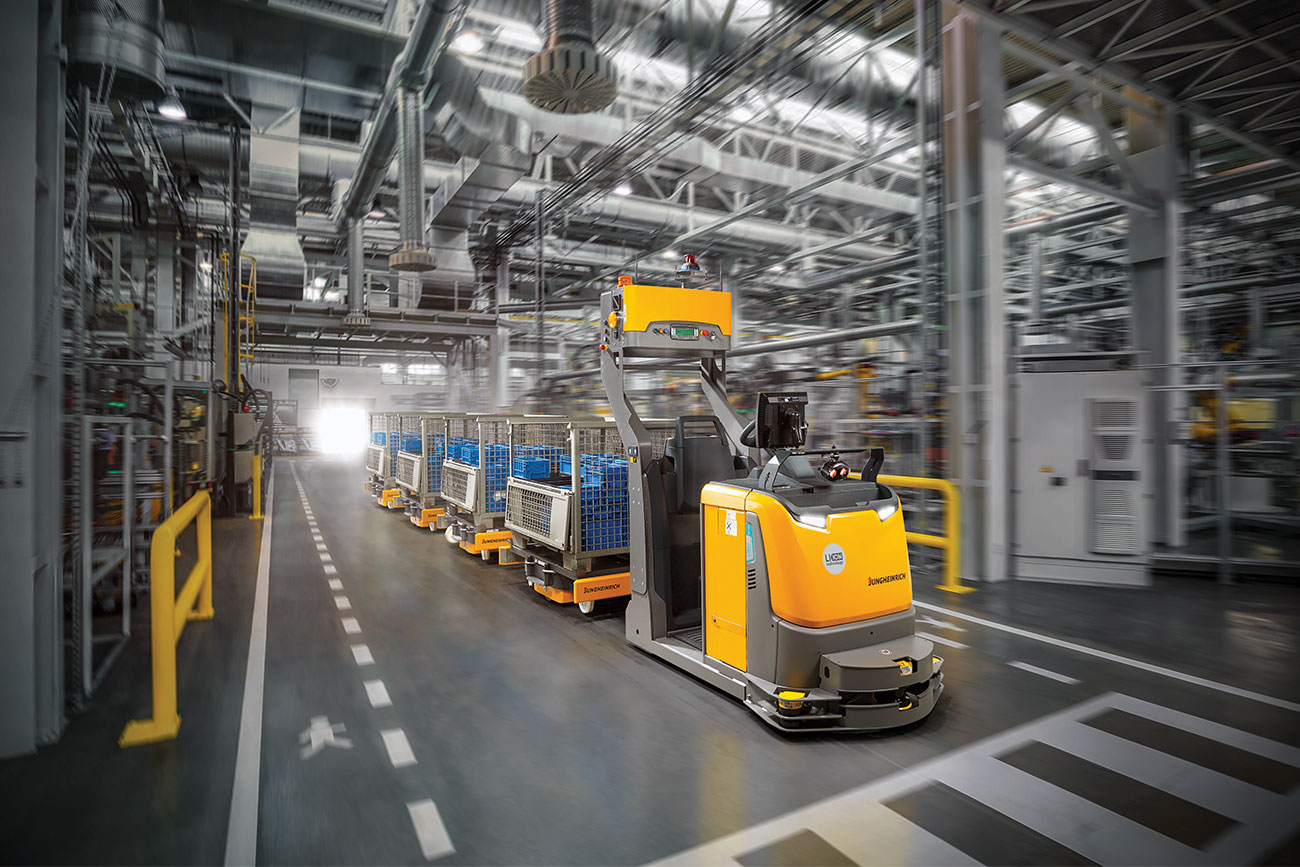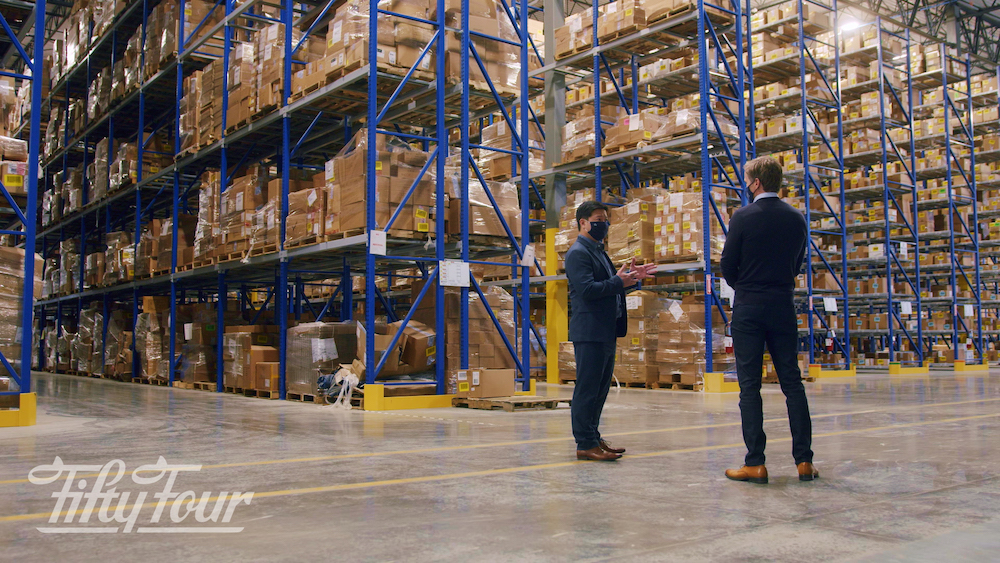
In 2020, the world shifted in ways we never expected. The pandemic saw the material handling and distribution center warehouse industry tackling supply chain disruptions at the same time a huge boon in e-commerce began. Meanwhile, already-existing issues like labor shortages became even more apparent.
Many in the industry were still clinging to age-old methods of doing business – tying what few employees they had to repetitious, mind-numbing tasks while keeping records with reams of paper. Inventory for some is still a dreaded annual event – that sometimes doesn’t even get done. Downtime due to unexpected equipment failures comes out of the bottom line.
For material handling and DC warehouse companies that had not stepped up their game prior to the pandemic, operational challenges have only become even more onerous – and competitors who did start exploring and utilizing new technology have gained the edge. With the onset of innovative ways to decode next gen material handling and DC warehouse demands, it’s time to start learning how you can implement technology, such as robotics and automation, to take the lead on your competition.
A rapidly growing e-commerce industry demands material handling and DC warehouses to be able to move quickly, fulfill orders quickly, ship quickly and process returns quickly. For continued positive growth, your company will need to dedicate some serious thought to innovation.
Let’s take a look at how robotics and automation are helping the material handling and DC warehouse industry keep up with e-commerce demands, deal with supply chain logistics, address labor shortage issues and provide an ROI in increased efficiency and production.

Automation for Everybody
When the material handling and DC warehouse industry talks about automation, the term can refer to allowing automated technology in various shapes and sizes into every single part of the business. Most likely, the percentage of businesses in this industry who utilize some form of automation is in the high 90 percent. Does your company use accounting software that “automatically” reconciles accounts as data is entered? Maybe you’ve taken steps to “automate” your inventory process. If either of these apply, you’ve already taken steps toward automation.
Automation in the material handling and DC warehouse industry comes with some pretty hefty benefits, including:
- More precision, less errors – With automation, the human error factor is eliminated.
- 24/7/365 working schedule – Your automation is not going to be going to Brazil for vacation.
- Less product damage – Parameters don’t allow for product ill-handling.
- Less human damage – Your human work force is not suffering from repetitive injuries.
- Superior use of resources – You can use your human work force in more critical and creative ways.
- Consistency and reliability – Automation results are always the same.
Automation is a large umbrella that can make life easier and smoother in the material handling industry. Automation can make your inventory control an ongoing, real-time process that counts everything that comes in, goes out or comes back as a return. Warehouse organization grows by leaps and bounds with automated storage options that work together with your human employees.
Other areas that can be automated and will directly impact ongoing warehouse operations and costs are smart buildings that can turn lights and HVAC on and off as the need arises and fleet management systems that can keep you posted in real-time about the status of your equipment, alerting you ahead of time when a problem is surfacing so you don’t face downtime.
So, as you can see, automation in today’s material handling and DC warehouse world runs the gamut from smart buildings to smart fleets to smart systems. But automation also encompasses robotics – the other side of transforming your operations into an increasingly efficient and more productive warehouse position.
A Perfect World
What exactly does the face of automation look like these days in the material handling and DC warehouse setting? It looks like:
- AGVs and AMRs – automated guided vehicles and autonomous mobile robots
- Picker robots – turning the most time-consuming warehouse task into a breeze
- Packing and sorting robotic arms – Tedious, time-consuming, repetitive tasks
- Loading and unloading robots – reduce human time at the dock
- Smart conveyors – shifting within parameters to meet new demands
AGV (Automated Guided Vehicles)
There are several different types of automated guided vehicles (AGVs) that provide answers for varying applications. For larger material handling and DC warehouses, a towing AGV can be programmed to pull load carriers on different routes through the warehouse, picking up or dropping off – or both – products and pallets. Instead of your employees trucking materials around, they can be engaged in shipping and receiving instead. An AGV tow vehicle can bring new product from the dock to the appropriate place for unloading and storing.
Of course, AGVs also include today’s line of automatic forklifts and pallet jacks – capable of moving heavy loads from point to point and stacking those loads correctly into storage without human intervention.
AMR (Autonomous Mobile Robot)
The autonomous mobile robot is designed to operate independently from human intervention and is able to make limited decisions based on circumstances and perceived input. The AMR can move material and product around the warehouse all day long – only needing to stop occasionally for a battery charge.
Other tasks the AMR can perform include sorting, fulfilling orders, processing returns, updating inventory management systems and processing incoming and outgoing product. The AMR is truly a superior way to free up your manpower for critical thinking positions.
Picker Robots
Product picking is the warehouse’s largest drain on human employees – and it doesn’t have to be that way. Today’s technology includes picker robots that can work in tandem with your employees to find and retrieve stored product or pallets for order fulfillment. Picker robots work steadily, with little supervision, and can be programmed to bring product to a central place where employees do the actual shipping.
Robotic Arms
Besides being able to hold dangerous materials so a human doesn’t have to, in the material handling and DC warehouse setting, robotic arms can be used in a variety of ways, including placing and removing packages and boxes off or onto a conveyor system. Robotic arms take the place of or work alongside human workers, helping to decrease repetitive movement injuries while freeing employees up for more critical and complex tasks.
Loading and Unloading Robots
It’s now possible to program robots to carry out increasingly complex tasks such as loading and unloading trucks at your dock. The dock area has traditionally been one of the more dangerous places in the material handling and DC warehouse. Reducing the number of employees working at the dock and replacing them with robots not only increases efficiency and productivity, it can decrease workplace injuries and accidents.
Smart Conveyors
Conveyors are not exactly robots, but the right system of automated conveyors working in conjunction with the right robotic equipment can transform a clunky, short-staffed and slow material handling and DC warehouse into a model of integrated smart systems that work continuously to increase your optimized production schedules.
As the material handling and DC warehouse industry moves forward in 2021, learning how to take advantage of today’s newest and most innovative automation and robotic technology becomes more important. For those who want to stay competitive in an ever-increasing e-commerce world, it’s imperative to upgrade your warehouse processes. At 54 Intralogistics, helping you understand and apply this new technology to your specific application is what we do best. Contact us today to find out more.
